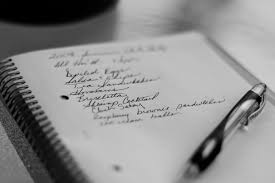What is a simple garnish?
A garnish is an item or substance used as a decoration or embellishment accompanying a prepared food dish or drink. Parsley is an example of a traditional garnish; this pungent green herb has small distinctly shaped leaves, firm stems, and is easy to trim into a garnish.
What is used for garnishing food?
Chopped herbs or small twigs of herbs, leafy vegetables, twirls of carrots or tomatoes, swirls of fresh cream, fruit glaze, chopped nuts, seedless berries, and lemon zest or slices are used for garnishing.
What are some example of garnishes?
Let’s look at the most common types of garnishes used to enhance the look and flavor of a dish.
- Herbs and Leaves. Many green leaves and herbs are used for garnishing purposes.
- Roots and Greens.
- Edible Flowers.
- 4. Fruits and Vegetables.
- Purees.
- Sauces and Syrups.
How do you make a good garnishment?
First add food color to water, then soak the garnish until you have achieved the depth of color you wish. If you prefer, natural dyes such as beet juice, grape juice and carrot juice can be used. 3. Keep garnishes simple, natural and fresh.
What are the three types of garnishes?
The main types of garnish are herbs, leaves, roots, greens, fruit (often the peel), vegetables, purees, sauces and syrups….Let’s look at the most common types of garnishes used to enhance the look and flavor of a dish.
- Herbs and Leaves.
- Roots and Greens.
- Edible Flowers.
- 4. Fruits and Vegetables.
- Purees.
- Sauces and Syrups.
Why is garnishing food important?
Plate Garnishes Garnishes can be used to enhance plate presentation to add color, interest, taste and texture as long as they harmonize with the foods and accurately represent what is contained within the dish.
What types of garnishes do Chefs commonly use?
Why garnishing is important in food preparation?
Garnishes can be used to enhance plate presentation to add color, interest, taste and texture as long as they harmonize with the foods and accurately represent what is contained within the dish.
What are the tools used for garnishing?
Garnishing Tools
- Veggie peeler.
- Butter curler.
- Zester.
- Melon baller.
- Tournee knife.
- Channel knife.
Is garnishing important in food plating?
What can you use for a food garnish?
1) Herbs and Leaves. Many green leaves and herbs are used for garnishing purposes. 2) Roots and Greens. Most of the time, greens are used as side salads on platters to fill up the empty space. 3) Edible Flowers. Many flowers like Calendula, Pansies, and Jasmines are edible and can be used as a garnish in many dishes. 4) Fruits and Vegetables. Lemon, lime, oranges, berries, grapes, radish, and tomatoes are the most common fruits and vegetables that are used as garnishes. 5) Purees. Purees like tomato puree are often used for garnishing purposes. They can be spread artfully on the platter or poured over the food item. 6) Sauces and Syrups. A number of sauces and syrups are quite popular when we talk about garnishing.
What are examples of food garnishes?
Overview. A garnish makes food or drink items more visually appealing.
What are cooking garnishes?
Herbs like parsley, basil, thyme and rosemary are among the most common garnishes because they are fresh and often brighten a dish or cut through rich, dense flavor palates. Other ingredients that can be used as garnishes include slices of citrus like lemon, lime or orange.
